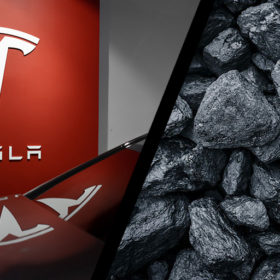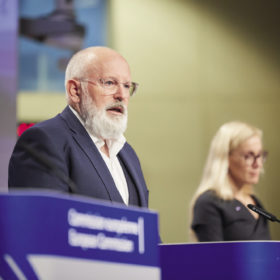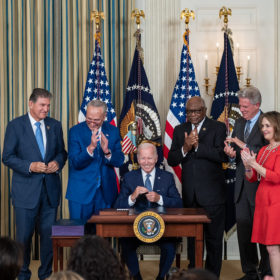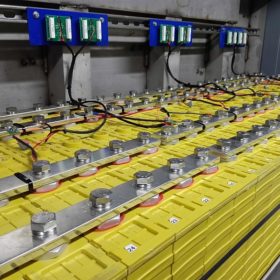Impact of single-axis agrivoltaics systems on non-irrigated grassland
US researchers are studying how agrivoltaic systems mounted on single-axis trackers affect rainfall and light redistribution at a 1.2 MW installation on grassland in Boulder, Colorado.
Origin takeover revived after Brookfield revise offer
The Brookfield-led North American consortium courting Origin Energy has finally come back with a revised bid for the company, valued at roughly $18.2 billion (USD 12.5 billion). The offer is only fractionally lower than the initial bid, which came as a relief for the market, and has been endorsed by Origin’s board.
Sydney’s Magnis Energy signs deal with Tesla, quietly abandons Townsville gigafactory plan
Australian graphite miner turn integrated lithium battery company, Magnis Energy Technologies, has signed a significant offtake deal with electric vehicle giant Tesla. The agreement comes the same month the company quietly dropped its plan to build a 18 GWh lithium-ion battery factory in Townsville, northern Queensland.
Custom-made 3D printed solid-state batteries
US-based Sakuu has announced that it has successfully 3D printed solid-state batteries in custom shapes and sizes at its battery pilot line facility in Silicon Valley, California.
Relectrify seeks to scale up operations with backing of Toyota Ventures
Australian startup Relectrify aims to scale up the adoption of its highly efficient and cost-effective battery storage technology after attracting financial backing from a group of international heavyweights including Japanese car giant Toyota’s venture capital firm.
Europe introduces new green hydrogen rules
The European Commission has presented the final version of its new rules for green hydrogen, with looser requirements to qualify hydrogen as “green.”
Australian solar thermal company to list in New York following deal with world’s largest oil contractor
Australian concentrated solar thermal company Vast Solar has struck a deal with the world’s largest oil drilling contractor, Nabors Industries, announcing it will go public via the partnership and expects to list on the New York Stock Exchange midyear.
Australia regretting belated transition as IRA sparks global race for renewables
When US President Joe Biden signed the $500 billion (USD 369 billion) Inflation Reduction Act into law in August 2022, it was lauded as the most significant policy the world has yet seen to combat climate change and drive the transition to renewable energies. However, some international critics and competitors claim the landmark bill thwarts their slow-burning ambitions to foster green manufacturing at home. As governments scramble to respond to the scale of the IRA, Australia is one country realising it may have already been left behind.
New EV battery offers 50% more energy density than traditional lithium-ion batteries
Ionblox says it will use $32 million of series B funding to support the buildout of a novel silicon anode electric vehicle battery.
Solar tracker supplier to build manufacturing plant in Australia
United States-based solar tracker provider Array Technologies is planning to set up manufacturing operations in Australia after being awarded a contract to supply trackers for a 102 MW solar farm being developed in Victoria’s northeast.









